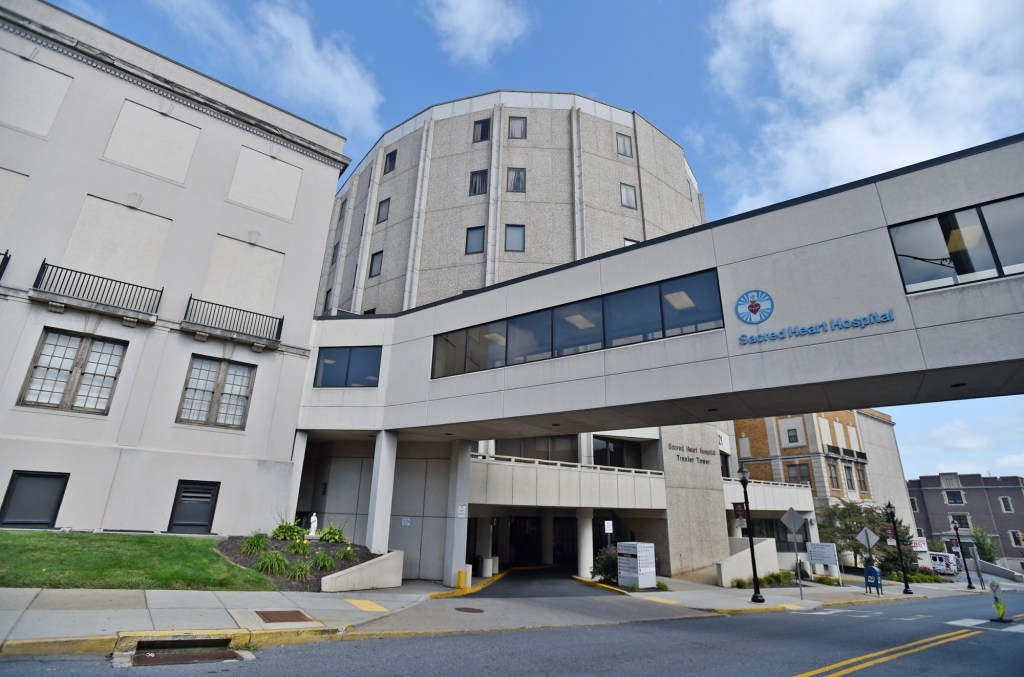The poorest residents of Allentown were significantly more likely to make multiple emergency room visits in a year than the city’s wealthiest residents, according to St. Luke’s University Health Network’s latest community health needs assessment.
City residents with insurance did not face many barriers to basic care, with about 93% saying they saw their primary care provider within the last year and less than 3% saying they didn’t have a primary provider. But the rates for uninsured residents was far lower, St. Luke’s survey found: Only 62% said they had seen their primary provider in the last year and nearly 10% didn’t have one.
Dr. Rajika Reed, vice president of community health for St. Luke’s, said this is reflected in emergency room visits. Among Allentown residents who made less than $15,000 per year, 24% visited an emergency room three or more times. Conversely, of those who made $60,000 or more per year, just 2.1% made multiple visits to the emergency room.
The findings were part of an assessment that nonprofit health networks and hospitals such as St. Luke’s are required to complete to identify major health disparities in the areas they serve every three years to keep their tax-exempt status. St. Luke’s presented its most recent findings for the Allentown area at a community meeting Thursday morning at St. Luke’s Hospital–Sacred Heart in Allentown.
The data help St. Luke’s, public health experts and network partners develop plans to address disparities and other community health needs. More than 15,000 people across St. Luke’s service area — about 3,000 from the Allentown and Sacred Heart area — responded.
The 2025 survey found the biggest priorities from respondents in the Allentown area were access to care, chronic disease prevention and mental health.
The assessment found the majority of Allentown residents are overweight or obese, with only 23.1% not fitting in that category. The numbers were slightly worse for Hispanic residents, with 82% of respondents being overweight or obese. Very few ate large amounts of fresh produce, with only 6% consuming five or more servings of fruits and vegetables per day.
As for mental health, about 54% of survey respondents said they thought that mental health was a top priority for their community. And while most Allentown respondents reported that they never needed to take days off for their mental health, 43% said they used one or more sick days monthly because of mental health.
“So that’s a day where they cannot function in their normal capacity, whether it’s work or school or child care, which is a pretty significant amount of folks, and that’s once every 30 days. So there’s a lot more work to be done in this area,” Reed said.
But it wasn’t all bad. Drug overdoses per 100,000 people were lower in Lehigh County at 35 annually, than in Pennsylvania as a whole (41).
St. Luke’s is taking steps to address mental health needs in the community. Quynh Hicks, senior director for operations at Star Community Wellness, said one example is an integrated behavioral health model Star opened this year where a licensed mental health therapist and primary care provider work together to see patients who have anxiety, depression, acute grief or other common conditions that can be treated in an outpatient setting.
“We have a zero waiting list right now across the street for pediatrics and women’s health care service by a licensed counselor who is fluent in Spanish and English,” Hicks said. “The nice thing about that is that the PCP can work in conjunction. They can see those therapy notes and they can help prescribe the medication appropriate to the patient’s needs.”
She added that in the next few weeks Star will have a therapist available who is fluent in English, Spanish and American Sign Language.
St. Luke’s has held similar community meetings at other hospital campuses across its service area. It plans presentations Oct. 20 at Nitschmann Middle School for the area served by St. Luke’s University Hospital in Fountain Hill, and Oct. 21 at the St. Luke’s Penn Foundation for the areas served by St. Luke’s–Quakertown, St. Luke’s–Upper Bucks and St. Luke’s–Grand View. St. Luke’s spokesperson Sam Kennedy said the information shared during each presentation is tailored to the specific locale.
Originally Published: October 10, 2025 at 6:00 AM EDT
